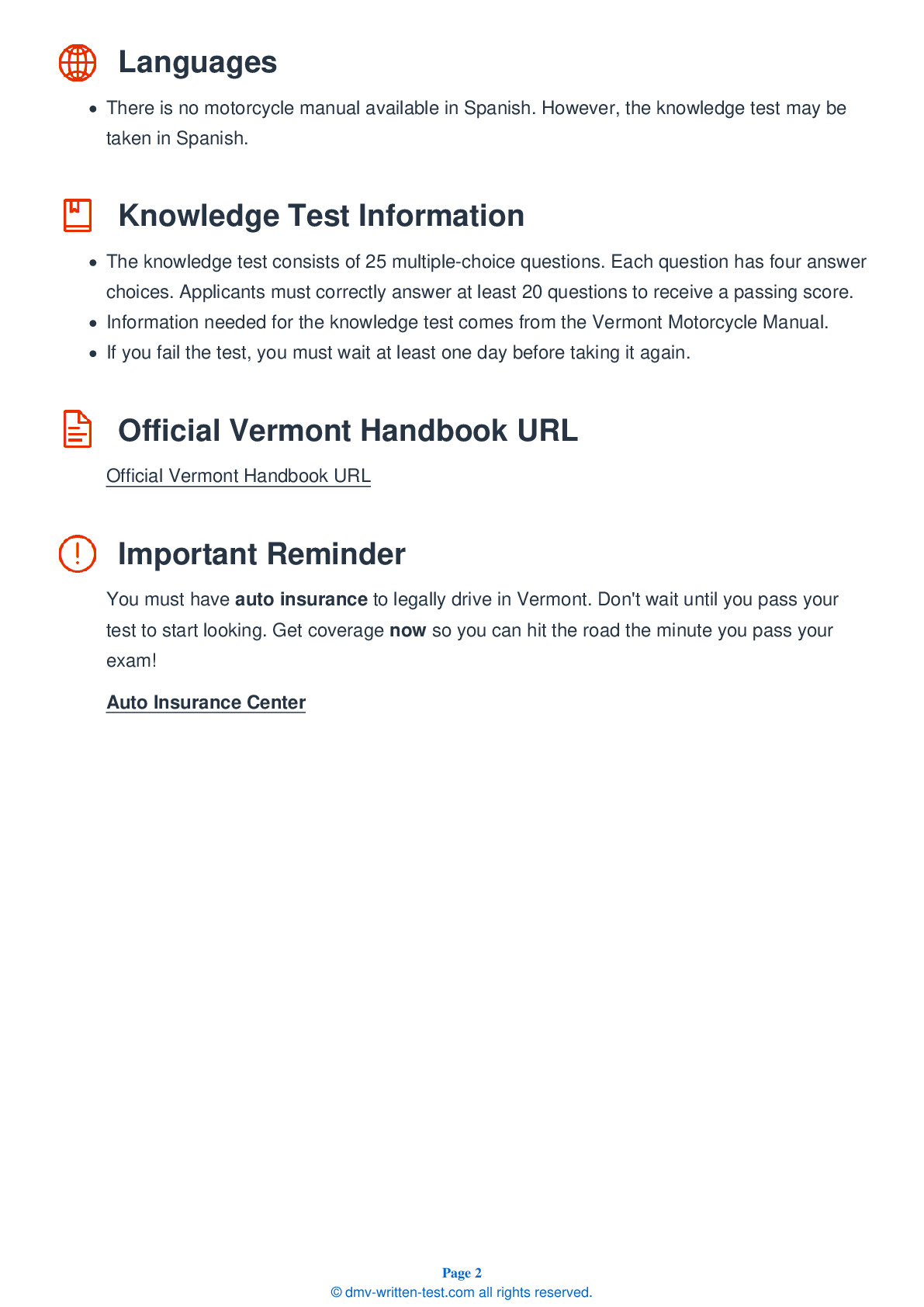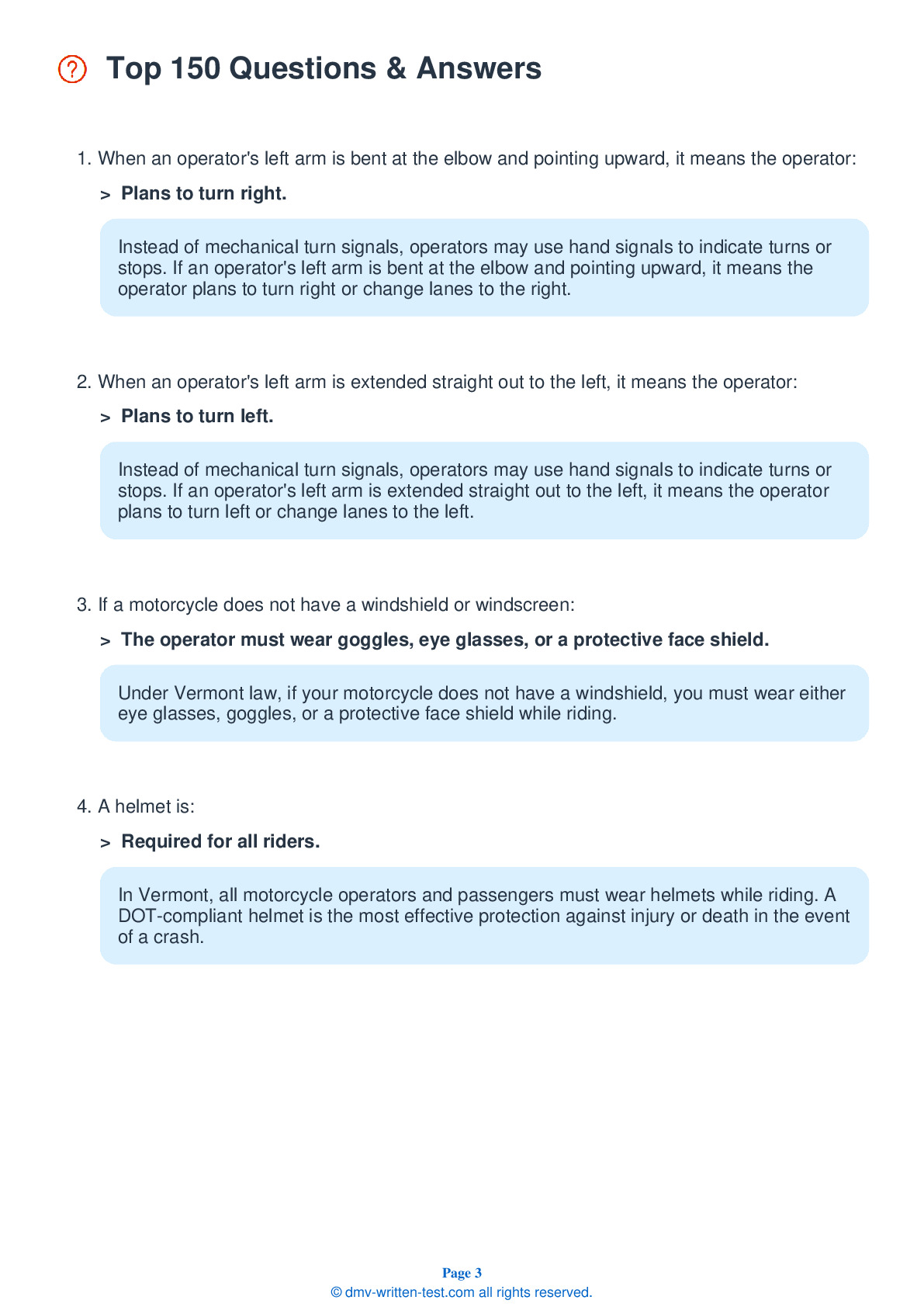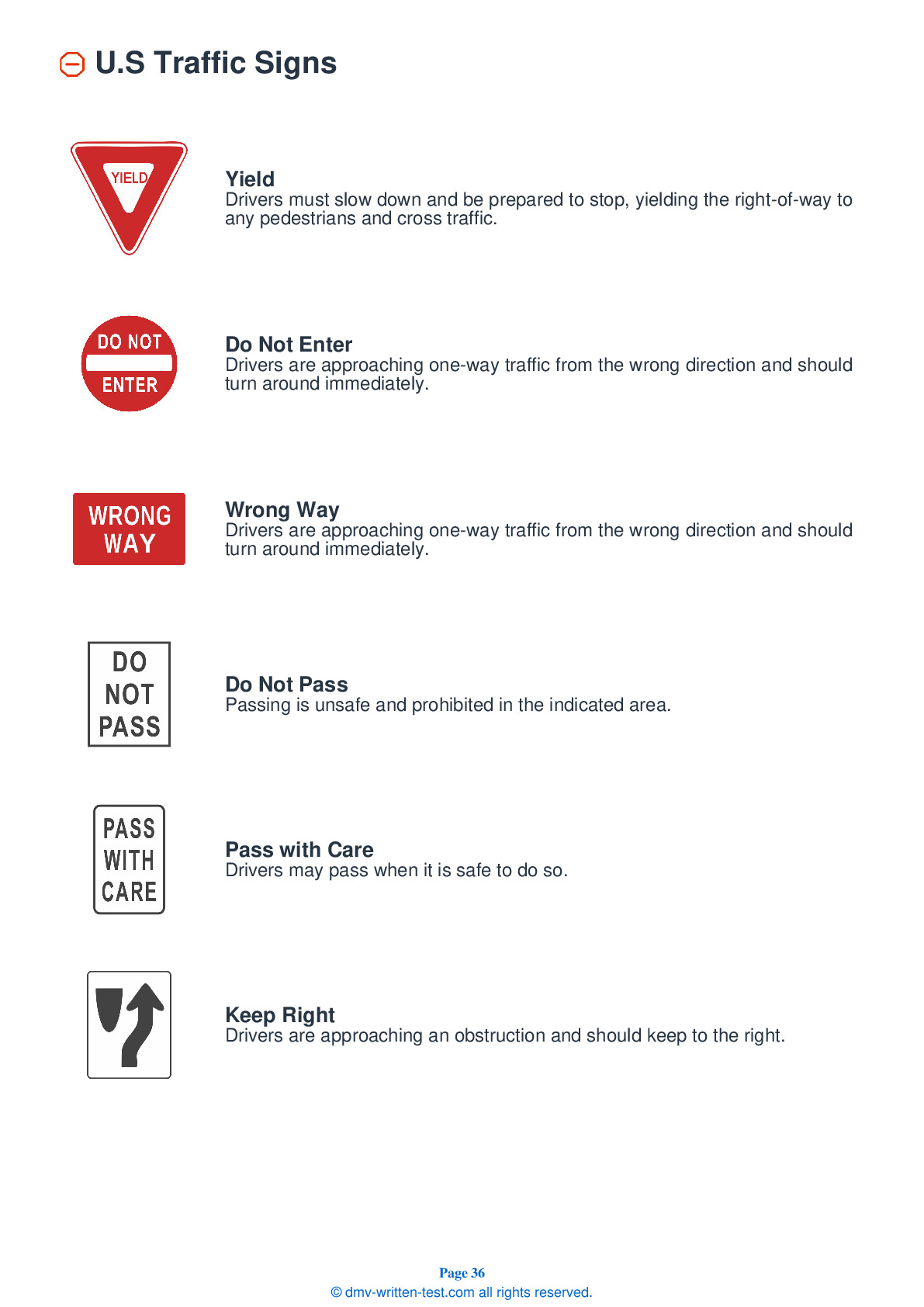2025 Vermont Motorcycle Permit Test 14
The following questions are from real DMV written motorcycle permit tests. These are some of the actual permit questions you will face in Vermont when getting your motorcycle learners permit. Each motorcycle theory practice test question has three answer choices. Select one answer for each question and select "grade this section." You can find this button at the bottom of the drivers license quiz. For a complete list of questions and answers for Vermont please visit https://cheat-sheets.dmv-written-test.com/en/vermont/motorcycle.
Number of Tests
Number of Question
Passing Score
7. Swerving a motorcycle:
Explanation
Swerving is a quick maneuver that requires a lot of traction in order to be safely executed. Making sudden moves, such as swerving, on slippery surfaces should be avoided.
8. In which of the following situations should you increase your following distance?
Explanation
While a two-second following distance is generally adequate, you should increase your following distance any time conditions would require a longer stopping distance, such as when the pavement is slippery due to poor weather conditions. Additionally, you should increase your following distance at night, if you cannot see through the vehicle ahead, and when traffic is heavy.
9. A rectangular sign may be a:
Explanation
Signs informing road users of road regulations, such as speed limits, are normally rectangular and colored white with black lettering or symbols. Riders must follow the rules posted on these regulatory signs.
10. Each traffic lane gives the motorcyclist how many paths of travel?
Explanation
Each traffic lane provides three paths of travel for motorcyclists: the left, center, and right portions of the lane.
11. To be effective, an eye or face shield must:
Explanation
To be effective, an eye or face shield must be free of scratches; be resistant to penetration; allow clear views to both sides; fasten securely; permit air to pass through to prevent fogging; and allow room for eyeglasses or sunglasses, if needed.
12. Which of the following is not a good safety tip?
Explanation




